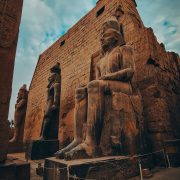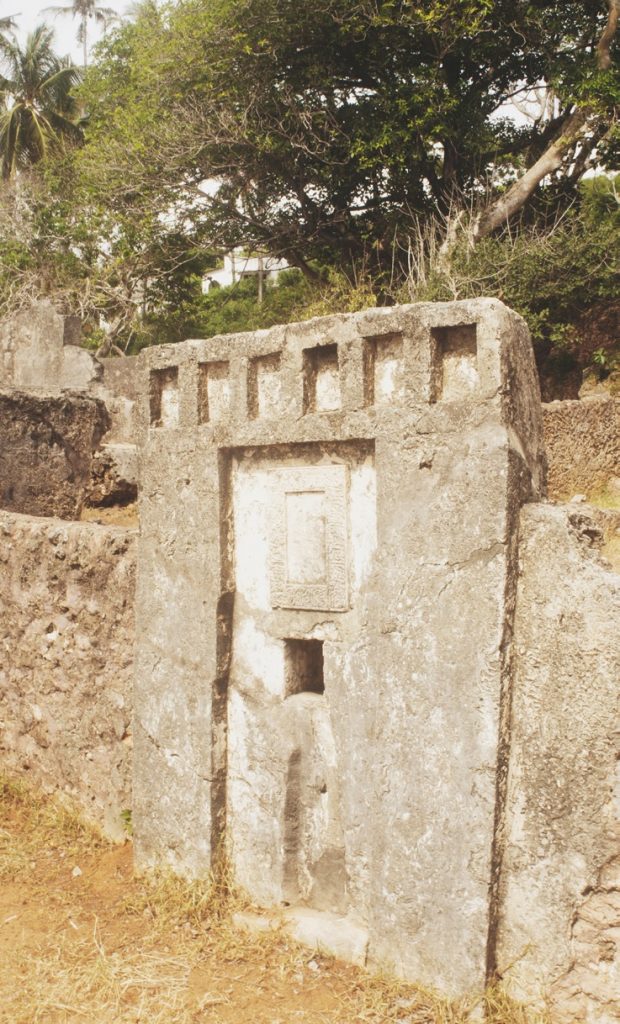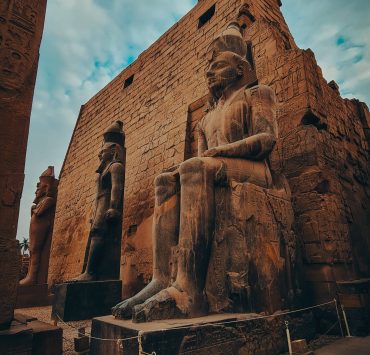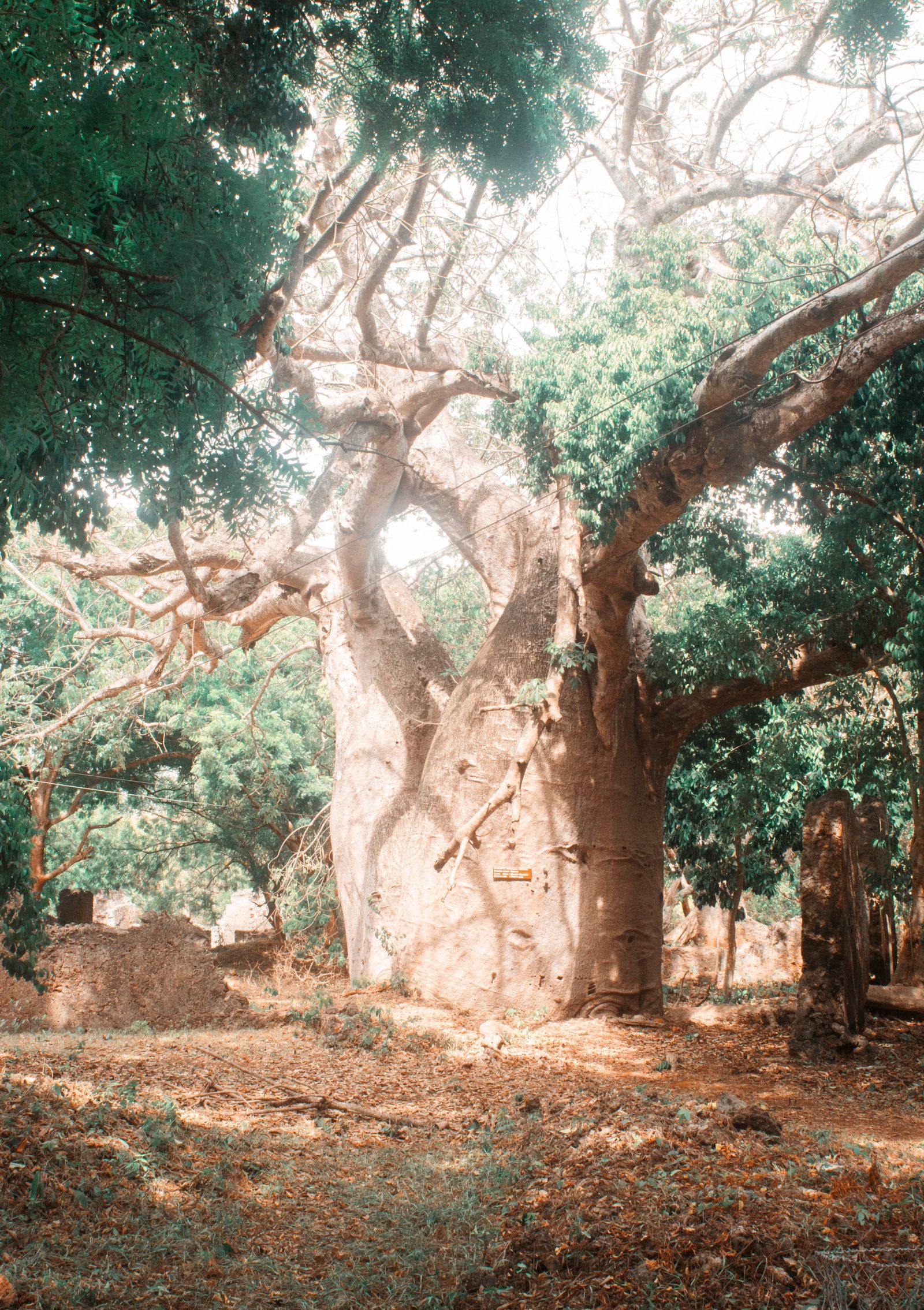
Chioma Phillips is the Editor of Msingi Afrika Magazine and…
Read Next
And the Question of Afrika’s Ruins and the Restoration of Her Lost Glory
No one living knows what its original name was, nor what the settlement was established for. Today, as one walks down the silent leaf-covered paths of this abandoned ancient town, one yearns to engage in earnest conversation with the gigantic 1000-year-old Baobab trees to find out what they saw, learn what they know about the place now called Jumba La Mtwana (large house of the slave) and unearth the mysteries behind its existence. Surely these huge plants could divulge what happened at this 14th Century Swahili settlement and why its inhabitants appeared to have left abruptly in the early 15th Century?
Jumba La Mtwana is the site of ancient ruins in Mtwapa area of Kilifi County at Kenya’s coast. The location’s surviving structures are four houses, four mosques, and a tomb, constructed primarily out of coral. Also found within the site are ancient wells and cisterns once used by the inhabitants of old. This site is now gazetted as a national monument by the government of Kenya.
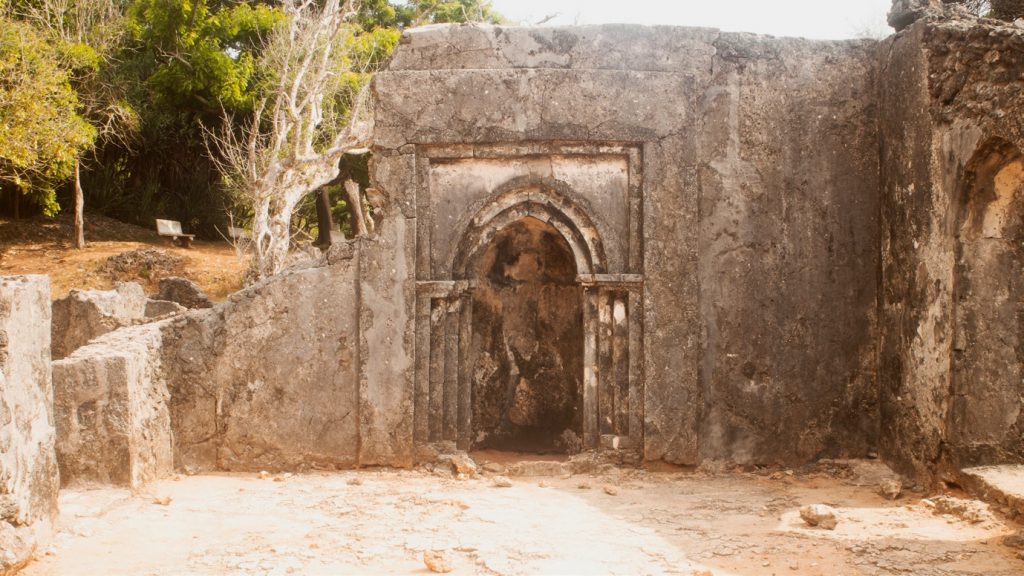
Speculation surrounds this site as to its function, role and location. It has been said that it was situated strategically where ships could not dock, offering it and its inhabitants protection from attack. It has been said that the location was chosen and deserted for similar reasons – the presence, and later, absence of fresh water.
That is the mystery behind ruins that do not have any documentation and have scant physical evidence to provide more clues though, isn’t it?
One can only hazard a guess based on what is left behind as to what was the reality on the ground, and from there build a narrative that answers the questions that it can – to some measure of satisfaction. It is believed that this site, whatever its original name and purpose was, housed travelers from afar who sailed to Afrika’s coast using the monsoon winds. These sojourners would then need to stay for long periods while waiting for the winds to change direction, enabling them to travel back home. Historians have claimed that there were fishermen trading here and women who were not clad in bui-bui or hijab, suggesting that form of dress was introduced to Islam much later in history.
Having visited this place on two separate occasions, for two very different reasons having reflected on the many, many ruins in Afrika – whether destroyed by the hands of the colonizer or slavers or time and neglect – there are some questions that demand answer. I present to you some thoughts which have been quietly germinating since we started working on this magazine and have been fed and watered by circumstances and rich conversations like I have with my very insightful husband who asked me provocative questions about Jumba. These thoughts are not exclusively mine.
It seems Jumba (or whatever it was called then) was abuzz with activity both local and international. A hub of trade, religious and social interaction that brought people from diverse places together. And when they left, only the trees, the grass and the animals remained, reconquering the land that man had once claimed as his. It is only the intervention of the government that has seen this place preserved, otherwise, I believe, every trace of it would have been erased and probably replaced by some garish hotel or club, considering its prime location on the beach.
As my husband pointed out, it’s interesting how, no matter what man may build or claim as his, as soon as he lifts his hand from that place, what God created always comes back into position – as if man never existed in the first place. Seeds will find their way into those locations, tree roots will topple the mightiest structures, insects and larger animals will make rubbish of palaces and hotels and things will be restored to their natural order. And the Baobab trees calmly and quietly continue to produce fruit and reclaim their territory as giants in the land, as they have for centuries.
As my husband pointed out when we walked around the ruins and stopped by briefly in the museum housing a handful of items related to the former town, “There is nothing there.” The expectation was that there would be traces of a people, their former lives, their activities, but these were, somehow, just gone. And nothing is left to tell the tale of the town that once apparently buzzed with activity.
It all will be gone someday
What is it that man considers in his perception of the world, life and circumstance around him? When you regard the greatness of the Benin Kingdom, or the vastness of Mansa Musa’s wealth, or the magnificence of Ancient Egypt, or the military prowess of the Zulu Kingdom under Shaka and then consider that each one of these was eventually wiped out and turned into a ruin and/or a distant memory of man’s high achievements. When you consider that this too happened to the Mayan Kingdom, Ancient Babylon, Ancient Greece, Ancient Rome, the British Empire and is now happening to America … do you consider that perhaps there is a pattern to all of these things? I asked myself, if these ancient and new civilizations were or are so great, why can they not assure their endurance through the ages? What happened along the way to bring their destruction?
It’s not enough to speak of greater military might or strategy, or sneakiness, or drought and disease were responsible. In the years in which those civilizations were thriving, why did they not succumb to one of these things? Why did the destruction take place when it did? Why does there appear to be a specific timing and permanence to their destruction that was, apparently, insurmountable and inescapable? Consider that war, drought, disease are mere tools. Cause and effect based on the state of the heart of the people are more closely linked to their decay and eventual demise.
Military historian, Jason Glubb suggested that empires go through the following seven stages:
- The Age of Pioneers (Outburst)
- The Age of Conquests
- The Age of Commerce
- The Age of Affluence
- The Age of Intellect
- The Age of Decadence
- The Age of Decline & Collapse
He estimated that empires do not last more than 250 years in lifespan and that while each one begins and is sustained based on similar patterns, their deaths happen in different ways.
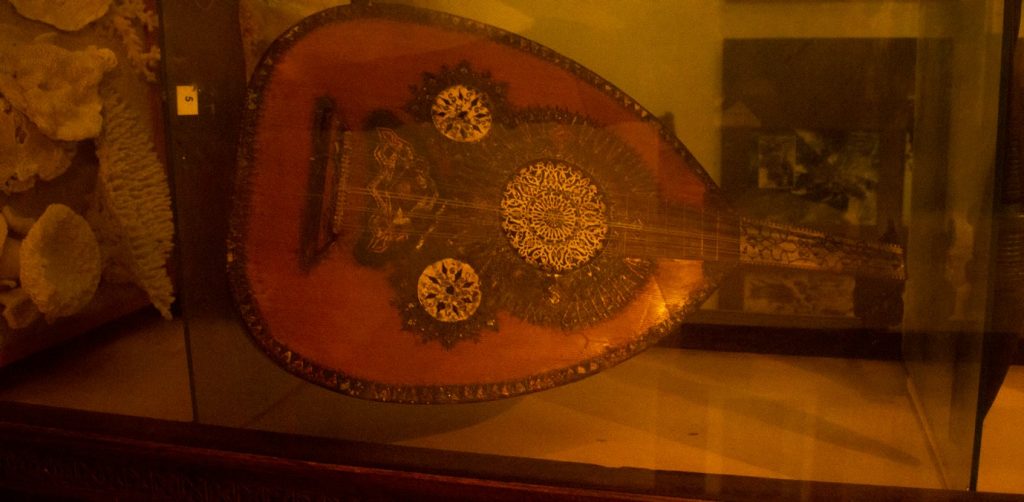
When I think about the great ancient Afrikan civilizations that have since vanished, I can’t help but wonder what went wrong along the way to cause the external hand to come their way and wipe them out. It is clear to me from a spiritual perspective, based on how God moves with and moves men, that something that has purpose yet to fulfil in His overall plans will somehow find a way in which to continue. So, I wonder, did the usefulness of these empires expire? Did they render themselves valueless much like the Israelites do from time to time by setting themselves as enemy to God based on their rejection of His will in their lives and therefore their reason for existence ended? If they were so superior, why is it that it appears as if they were erased from existence with such thoroughness?
I think about these things in the context of Jumba ruins just as I do of Ancient Egypt because we spend much time speaking of the former glory of Afrika and how it has to be restored. And, just like I suggested in the Editor’s Note – it is not the physical things that make up the lost glory of Afrika, but rather the identity and purpose of the continent. Similarly, with these ‘civilizations’ their identities and purposes must have either ceased to be necessary or defied the will of God to such an extent that their very existence was deemed unfit for purpose. Thus, their hour and type of demise was designed and implemented to fit the choices which they made.
What can ruins teach us
For someone paying attention and clear of mind, there is a lot that ruins can teach.
For a start and from all indications, it is clear that man’s work will always go to expiration, especially if such work is devoid of honor for God. That we see ruins of buildings, ancient and modern day architectural wonders go to waste, leaving behind trees, grasses and basically nature everywhere, shows you that no matter what man builds, it will always go to waste and that only what the Creator made will last. But since everything has a purpose, could the ruins also have some purpose attached to them? Absolutely. It’s like a fire place with ashes shouting very loudly “once upon a time there was fire here’ for anyone with a wise heart to hear and learn wisdom. We realized something very remarkable as this article was being written. On the wall of the tomb (whose image is above) is written in Arabic these words from the Koran. “Every soul shall taste death. You will simply be paid your wages in full on the Day of Resurrection. He who is removed from the fire and made to enter heaven, he it is who has won the victory. The earthly life is only a delusion.”
If the purpose of the ruins in different parts of the continent is to make us as Afrikans deeply consider why we remain on the face of the earth and hurriedly, but not mindlessly, move to reconnect and align with that purpose, then at least they have some value. Whatever abundance these civilizations enjoyed, it may have been sufficient to drive them away from their true connection with God’s purpose for them and thus they were eliminated. Gold and silver, precious stones and metals are not the defining factors for success. For a man laid to rest in the earth or left to rot on its surface, their value loses all meaning and they lose all hold and appeal. So, what is it that keeps a man that God deems to be success, goodness, and value in His sight that would then be a blessing and sustenance to the man, his family and his community around him?
Life is definitely beautiful and a life lived with purpose and heart for humanity will outlive its time. A man’s worth is not found in the amount of lifeless toys and things he gathers unto himself, but by how many lives will remember him for good after he is gone.
So, as we reflect on the past, and as we build anew, these are concerns that we must take to heart that we may not fail God in striving to recreate a glory that we think we have perceived and understood for Afrika.
Subscribe now for updates from Msingi Afrika Magazine!
Receive notifications about new issues, products and offers.
What's Your Reaction?
 PIN IT
PIN ITChioma Phillips is the Editor of Msingi Afrika Magazine and the host of Msingi Afrika Television. Her hope is to see the Truth shared, with all who will listen, for the transformation of the people and the continent of Afrika - and the world. She believes passionately in the critical role that Afrika and Afrikans have to play on earth right now and hopes to ignite the spark that will cause them to see and believe who they are, so that they can live out their Truest lives for the remainder of their days.








